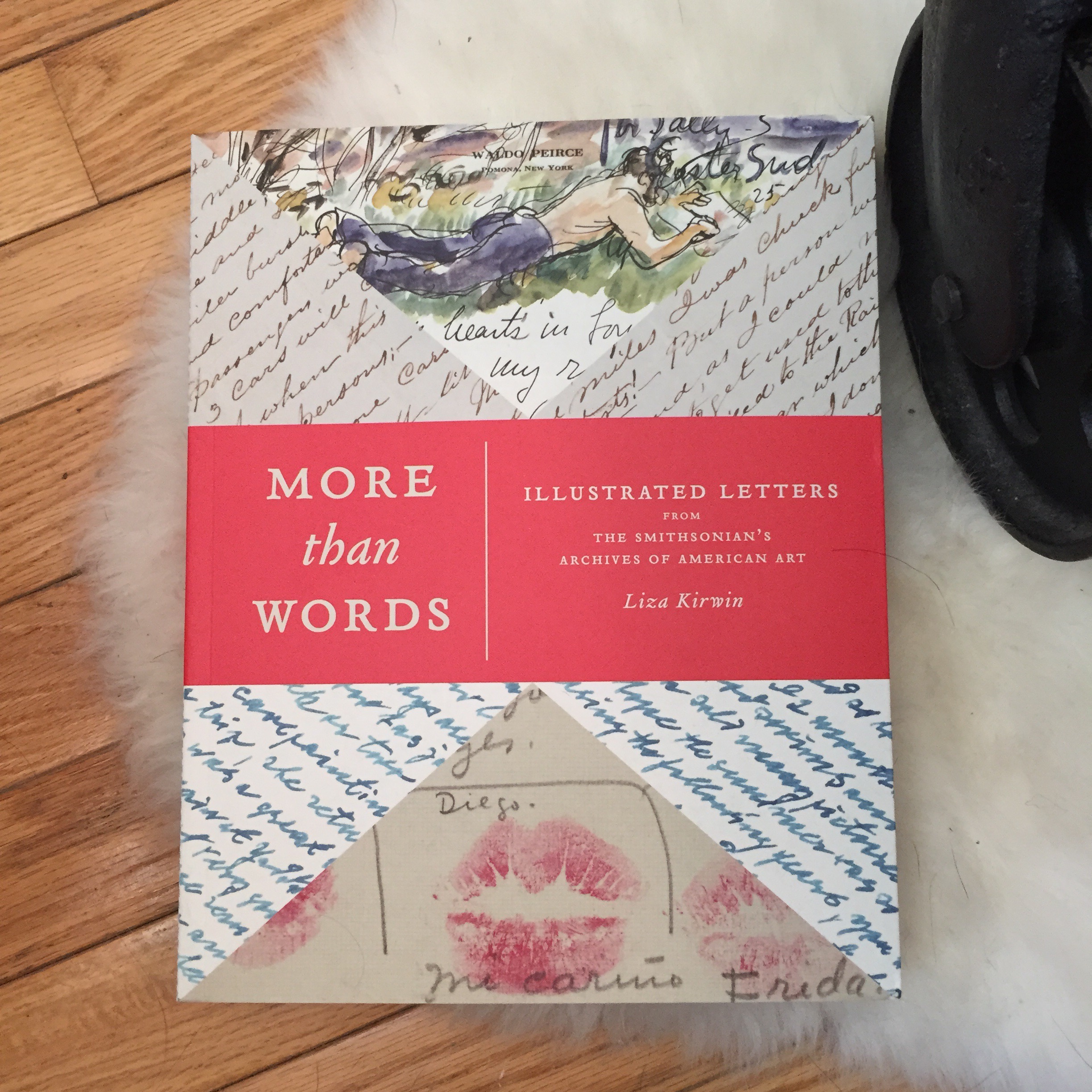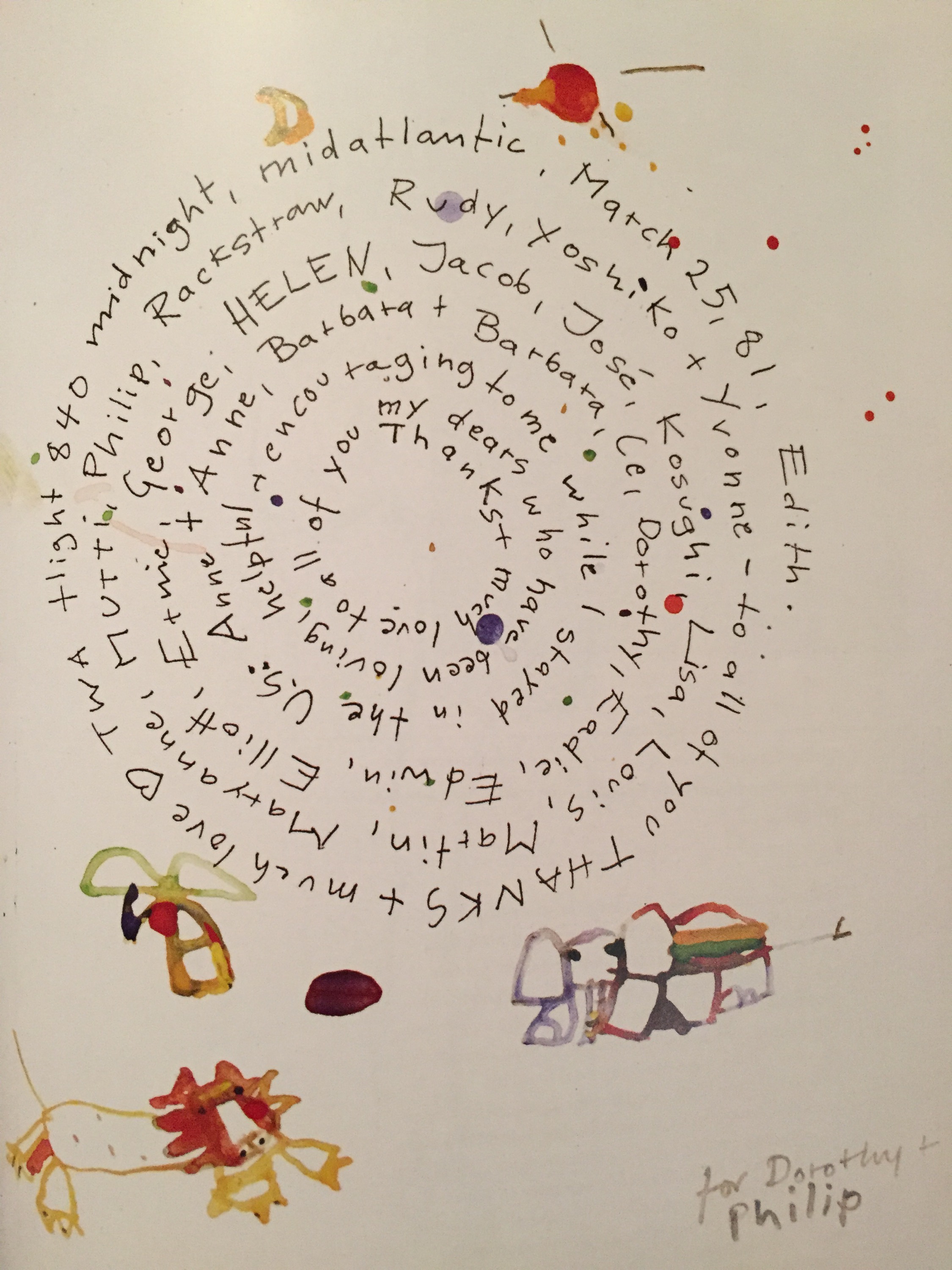Speaking of multimodality, which I have been doing quite frequently as of late (see my prior post), I've recently discovered something that joins three of my major joys in life: books, multimodality, and letter-writing. This blog post is dedicated to my new favorite read: More than Words by Liza Kirwin.

More than Words is a compilation of illustrated letters from the Smithsonian's archives, featuring correspondence from Frida Kahlo, Andy Warhol, Winslow Homer, and a host of other familiar and unfamiliar names. The inside cover of this lushly illustrated volume says it best:
Words speak volumes, but, as every letter writer knows, there are times when they simply won't do.
The letters in this book are beautiful, romantic, funny, and, much to my unending glee, complexly multimodal. The illustrations and sketches seamlessly integrated into the letters' text are a vital part of each letter's individual and specific message; the text and the images interact with one another in creative and engaging ways to generate impressions, emotions, and experiences. The book's introduction characterizes the way the images bring meaning to the letters by saying, "they have the power to transport the reader to another place and time - to recreate the sights, sounds, attitudes, and imagination of their author" (xv).
The visual components of these letters aren't limited to the illustrations. Each letter is characterized by unique handwriting, scribbles, colors, and unusual layouts, all of which work together to create intensely personal and unique messages. The letters provide a surprisingly intimate and candid look at the individuals who wrote them; I feel almost like I am intruding on the authors when reading them.
The book is divided into 6 themes: travel letters, love letters, plays on words and puzzles, accounts of events, illustrated instructions, and thank-you letters. The scanned letters are large and vibrant on the pages; each one is accompanied by a small blurb identifying the author, the recipient, the date mailed, and some brief contextual information. Transcripts of the letters can all be found at the back of the book, compiled into a sort of appendix in case the reader wants to check them. The transcripts can be helpful, as some of the handwriting in the letters is scrawling and difficult to decipher; words and lines are often scribbled out and rephrased or rewritten. However, it is nice to have those neatly typed transcripts tucked away in the back of the book, where it's clear that they are not the heart and soul of these compositions. They are only a piece of the meaning; they mean less when separated from their visually rich context.
These letters would make for some amazing classroom activities! I would love to scan a few different letters and have students get in groups to analyze the rhetorical situations that prompted each correspondence. The letters offer a great opportunity to discuss how the illustrations and the visual nature of the letters provide added meaning and importance to their messages. For visually-oriented students, I would think that being asked to perform a somewhat literary analysis on these beautiful letters would be a fun and engaging task! Until that point, I'll just thumb through these pages endlessly, because I don't think I'll ever get enough.


